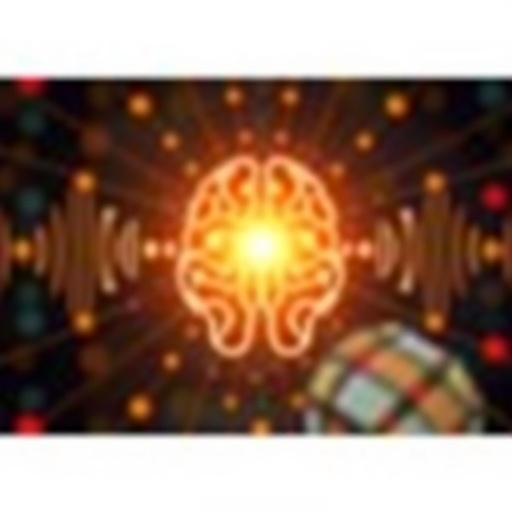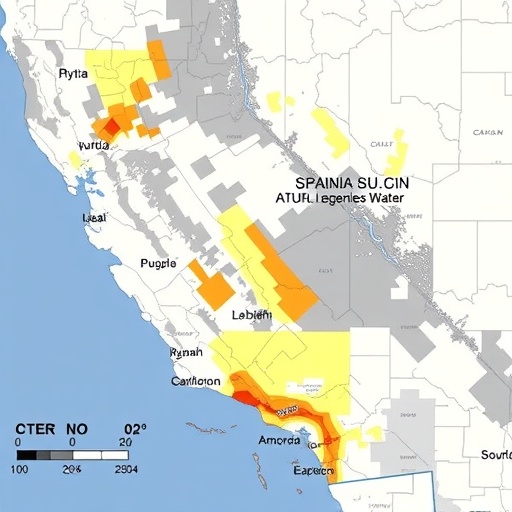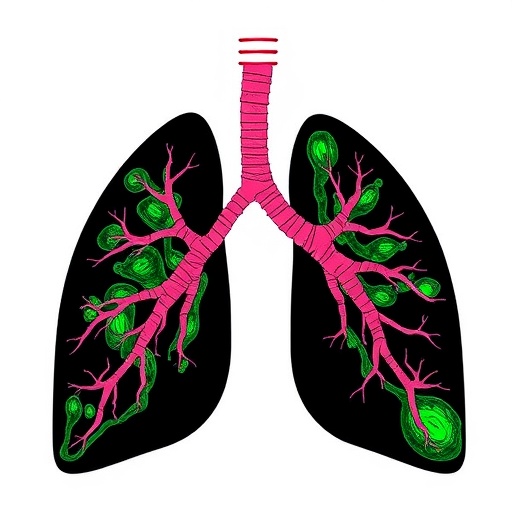In the quest to unlock the mysteries of human alertness, a groundbreaking study published in BioMedical Engineering OnLine has unveiled an innovative and rapid method to assess alertness by harnessing the power of optical stimulation-induced brainwave entrainment combined with the analytical prowess of machine learning. This pioneering approach offers a transformative avenue for objectively quantifying alertness levels—a critical factor influencing performance in countless daily and professional tasks—overcoming the limitations that have long hindered existing methods.
The latest study approached this challenge using optical stimulation to induce brainwave entrainment (BWE) across a wide range of frequencies, from the theta to gamma bands (4 to 48 Hz). Brainwave entrainment refers to the phenomenon where external rhythmic stimuli synchronize neural oscillations within the brain, effectively modulating brain states. The researchers exposed 40 human subjects to 12 discrete optical stimulation frequencies, each applied for a duration of 30 seconds, while recording real-time electroencephalogram (EEG) signals from the prefrontal cortex, specifically at the Fpz, Fp1, and Fp2 electrode sites.
.adsslot_4RMpwcnJF1{ width:728px !important; height:90px !important; }
@media (max-width:1199px) { .adsslot_4RMpwcnJF1{ width:468px !important; height:60px !important; } }
@media (max-width:767px) { .adsslot_4RMpwcnJF1{ width:320px !important; height:50px !important; } }
ADVERTISEMENT
The prefrontal cortex selection is particularly significant, given its established role in executive functions and maintaining vigilance and alertness. By focusing on these areas, the study sought to capture the nuanced electrophysiological signatures that correlate with fluctuations in alertness. Complementing the EEG data, subjective alertness evaluations were conducted through widely accepted measures, including the Karolinska Sleepiness Scale and the psychomotor vigilance test, providing a comprehensive behavioral correlate to the neural findings.
Central to the analysis was the extraction of nine distinct EEG features during the periods of BWE. These features, representing various brainwave power bands and entrainment characteristics, were scrutinized for their correlation with alertness states. For example, the β (beta) and γ (gamma) bands—commonly associated with focused attention and higher cognitive processing—were investigated for their differential expression relative to baseline states. Understanding which features are most predictive of alertness could pave the way for targeted neuromodulation therapies or assessment protocols.
In an impressive step beyond traditional statistical methods, the researchers integrated machine learning classifiers, including support vector machines, Naive Bayes, and logistic regression models, to create an automated system capable of distinguishing between different alertness levels based on real-time EEG input during BWE. This integration underscores the growing synergy between neuroengineering and artificial intelligence, facilitating more robust and scalable brain state detection frameworks.
Notably, among the various frequencies tested, the 30 Hz optical stimulation emerged as the most effective for inducing discernible brainwave entrainment changes linked to alertness variation. Particularly, three features—BWE intensity, β band power, and γ band power—demonstrated statistically significant differences between alertness states. Utilizing these parameters, the Naive Bayes model achieved outstanding classification performance, with an area under the curve (AUC) reaching 0.90, alongside high accuracy, sensitivity, and specificity values approximating 90%. Such results underscore the potential clinical and applied utility of this approach in real-world settings.
Perhaps unexpectedly, the researchers observed that the subjects’ alertness levels, as measured behaviorally and subjectively, did not significantly shift before and after the 30-second optical stimulation periods. This finding implies that while short-term optical stimulation effectively modulates EEG features predictive of alertness, it might not transiently alter the underlying alertness state itself. Hence, the protocol primarily serves as a diagnostic or assessment tool rather than an intervention intended to enhance alertness.
Furthermore, the study’s methodological rigor in correlating subjective scales, behavioral tests, and electrophysiological markers lays a robust foundation for future research. It invites exploration into longer stimulation durations, diverse stimulation frequencies, or multimodal sensory entrainment approaches that might also influence alertness levels transiently or chronically. The potential to personalize alertness assessment based on individual neural responsiveness to optical stimuli also represents an exciting frontier.
From a neuroscience perspective, the findings deepen our understanding of how rhythmic external stimuli interact with cortical oscillations related to vigilance and attention. The demonstrated significance of β and γ bands in reflecting alertness aligns with extant literature that associates these frequencies with active cognitive engagement. This convergence bolsters confidence in the neurobiotic validity of the proposed assessment technique.
While the study focuses on healthy adult participants, future research may expand to include clinical populations where alertness monitoring is critical, such as those with sleep disorders, neurological diseases, or cognitive impairments. Additionally, integrating this technique with other physiological measures like heart rate variability or pupillometry could enhance multidimensional assessment models, providing richer data for personalized alertness profiles.
The evolution of alertness assessment from subjective questionnaires and reaction-based tests to real-time EEG biomarkers interpreted through machine learning heralds a paradigm shift. This breakthrough not only enhances fundamental scientific understanding but also promises wide-reaching applications in safety, productivity, and health monitoring, ultimately contributing to improved quality of life and prevention of cognitive lapses.
As technology advances, coupling optical stimulation-induced brainwave entrainment with wearable EEG devices may render continuous alertness tracking feasible in practical environments. Such advancements could enable adaptive systems that respond dynamically to users’ cognitive states—alerting when vigilance drops or optimizing task demands for peak performance—revolutionizing human-machine interaction.
The study by Zhou, Tan, Wang, et al., represents a compelling example of how multidisciplinary collaboration can translate complex brain activity patterns into actionable data. Their work provides the scientific community and industry stakeholders with an invaluable roadmap for next-generation cognitive state monitoring protocols informed by neurophysiology and powered by artificial intelligence.
Subject of Research: Rapid and objective assessment of human alertness through optical stimulation-induced brainwave entrainment combined with machine learning analysis of EEG features.
Article Title: Alertness assessment by optical stimulation-induced brainwave entrainment through machine learning classification.
Article References:
Zhou, Y., Tan, Y., Wang, S. et al. Alertness assessment by optical stimulation-induced brainwave entrainment through machine learning classification. BioMed Eng OnLine 24, 100 (2025). https://doi.org/10.1186/s12938-025-01422-4
Image Credits: AI Generated
DOI: https://doi.org/10.1186/s12938-025-01422-4
Tags: brainwave entrainment technologycognitive state modulation techniquesenhancing mental acuity through technologyinnovative methods in psychological researchmachine learning in cognitive assessmentneuroengineering solutions for performancenon-invasive brain activity monitoringobjective measurement of alertnessoptical stimulation for alertnessovercoming limitations in alertness evaluationrapid assessment of cognitive performancetheta to gamma frequency stimulation





